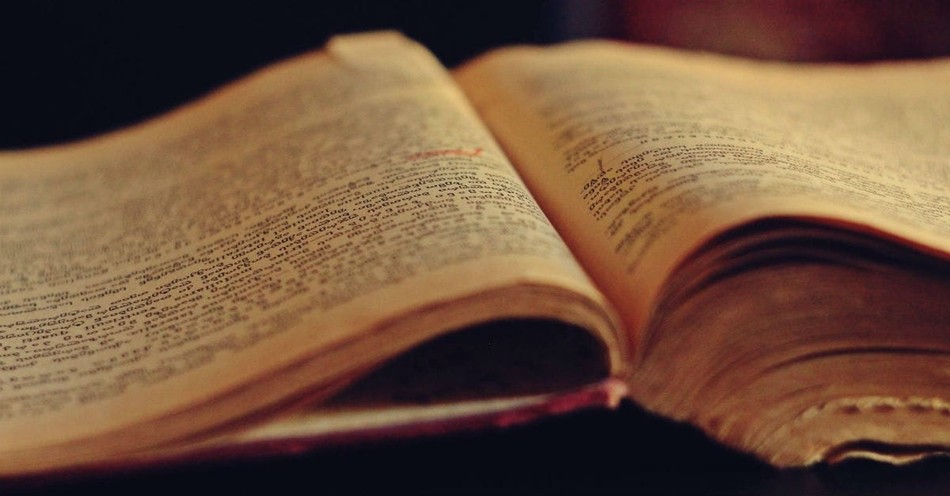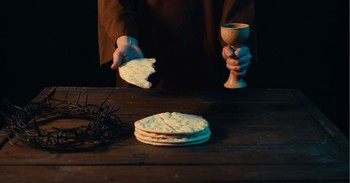The most prominent translation in Catholicism is the Good News Translation. The Catholic Bible has 73 books compared to Protestants' 66 books. So why did they add to it? Or did Protestants take books away?
How Did the Catholic Bible Come to Be?
Two languages were prominent in the time around Jesus: Hebrew and Greek. Both of these had Bibles in their language.
The Septuagint, the Greek New Testament, included books that modern Protestant Bibles don't include—the Protestant canon is built on the more conservative position developed in Palestine in the Intertestamental period. There was more theological leniency in Egypt and surrounding areas where the Septuagint was more prominent. As a result, books written after Malachi show up in the Septuagint that Jewish and later Protestant authors rejected.
Some books have been used to justify dogmas—such as Purgatory, indulgences, venial sin—or practices that Protestants reject.
The Catholic Bible is based on the Latin Vulgate, which Jerome compiled in the late 300s. Jerome was among the few people who could read both Greek and Hebrew. He translated several books from the original language. Some, he revised from a previous Latin translation. Jerome also included one book no longer included in the Catholic canon: an epistle to the Laodecians. While scholars believe that Paul did in fact write an epistle to the Laodecians, almost all agree that this epistle in the Vulgate is a forgery.
What Unusual Books Appear in the Catholic Bible?
The books included in the Catholic Bible which do not appear in the Protestant Bible are:
- Tobit
- Judith
- Baruch
- Sirach (or the writings of Ben Sirah)
- 1 Maccabees
- 2 Maccabees
- Additions to the book of Esther
- Additions to the book of Daniel (sometimes listed as the book of Bel)
The deuterocanonical books appear in the Catholic Bible after Nehemiah. Specifically, the books of Tobit and Judith appear before the expanded book of Esther. After the expanded Esther are the two books of the Maccabees (depicting events the Jewish festival Hanukkah commemorates). The other books (the Wisdom of Solomon and Sirach) appear after Song of Songs. The book of Baruch is the final book, which appears after Lamentations.
When Did the Catholic Bible Become Church Dogma?
Many of these books are quoted by the early church fathers (for example, Irenaeus) at various points. The fathers seemed to see these books as Scripture, which points to their prevalence in this period. The closing of the Jewish canon was established later—so, initially, there was more leniency in what could be considered Scripture.
The Catholic version of the Bible became church dogma at the Council of Trent in 1546. The fourth canon said:
"Moreover, this sacred and holy Synod,—considering that no small utility may accrue to the Church of God, if it be made known which out of all the Latin editions, now in circulation, of the sacred books, is to be held as authentic—ordains and declares, that the said old and vulgate edition, which, by the lengthened usage of so many years, has been approved of in the Church, be, in public lectures, disputations, sermons and expositions, held as authentic; and that no one is to dare, or presume to reject it under any pretext whatever."
This equates the Latin Vulgate with the original Greek and Hebrew manuscripts and puts the deuterocanonical books on the same level as the other New Testament books.
Martin Luther rejected the deuterocanonical books because they were written after God stopped speaking to the Prophets. He called them "Apocrypha, that are books which are not considered equal to the Holy Scriptures, but are useful and good to read." Luther believed these books were valuable but not essential to the Christian faith.
What Do the Additional Books in the Catholic Bible Contain?
The book of Tobit was likely composed between the Old and New Testaments. It depicts events that take place during the Israelite exile to Assyria. Likely written in the intertestamental period, Tobit deals with themes of faithfulness in times of oppression and God's protection of the faithful.
It begins by introducing Tobit, a faithful Israelite of the tribe of Naphtali. Tobit distinguishes himself as faithful by burying dead Israelites against the king's orders. However, he goes blind when a bird defecates in his eye. Now, Tobit relies on his wife, Anna, and son, Tobias. He sends Tobias on a mission to collect money he had given to a friend. Now Tobias goes with a companion, the angel Raphael in disguise. On the way, Raphael instructs Tobias to catch a fish with healing power. Once he arrives, he meets a girl named Sarah, whose previous two husbands had died on her wedding night due to the demonic influence of Asmodeus. With Raphael's help, Tobias marries Sarah and drives the demon away using some of the fish's gall. Then, they return to Nineveh and heal Tobit, causing many Israelites to praise God.
The book of Judith was written in the intertestamental period, while the Israelites were under Greek rule—likely written to encourage faithfulness amid persecution. Like the book of Tobit, it depicts events during the Assyrian siege of Israel—specifically, during the siege of a city called Bethulia. During the siege, a beautiful and pious widow named Judith sneaks into the Assyrian camp and gains the trust of the general. As Judith gains the general's favor, she is invited into the general's tent while he's drunk. Then, she beheads the general and takes his head into the city. The Assyrians see the general's lack of head and retreat. The people glorify God and give him thanks for Judith's bravery.
The Maccabees are set during one of the most intense persecutions of the Jews. The Seleucid (a dynasty started by one of Alexander the Great's generals) were attacking Judea. First Maccabees describes how the Seleucid ruler, Antiochus Ephiphanes, defiles the temple by sacrificing a pig on the altar in the Holy of Holies. Then Mattathias and his sons, including Judas "The Hammer" Maccabeus (Maccabeus means hammer), revolt and reclaim the temple. To rededicate the temple, they cleanse it, then light candles that only have oil for one night but last eight nights. Hanukkah commemorated these events.
Second Maccabees functions similarly to Ezra and Nehemiah, where two events happen simultaneously. It condenses the accounts in 1 Maccabees, focusing more on the narrative's spiritual dimensions. One main theme is faithfulness amidst persecution. It also discusses the resurrection of the dead—a relatively new idea that developed in the intertestamental period. The Pharisees embraced the idea, though the Sadducees rejected it (a difference that gets references in Acts 23).
The book of Baruch is believed to have been written during the Babylonian exile— likely around 100 or 200 BC, meaning it was written 200 years after the closing of the canon. Several manuscripts have been found in Hebrew, which may suggest a slightly earlier date. It begins with confession and then becomes a reminder of God's promises. The third chapter deals extensively with the importance of wisdom and God's greatness compared to oppressive Babylonian rulers. Then Baruch addresses a series of people—from the Israelites in Jerusalem to Jerusalem's neighbors, then the diaspora Jews. Finally, Baruch addresses those still in Jerusalem.
The final chapter of the book of Baruch is also called the letter of Jeremiah to the Babylonian exiles—certain manuscripts include it as a separate book.
The two wisdom books in the Catholic Bible are the book of Sirach (Also known as Ecclesiasticus) and Wisdom of Solomon. Sirach was written in Hebrew. Ecclesiasticus means church book, which indicates its extensive use in catechizing new believers. It contains many passages about good conduct and wisdom. The 51 chapters deal with theology, right conduct in life, and other helpful advice for life. One interesting verse is Sirach 23:1, where Ben Sirach refers to God as his Father.
The Wisdom of Solomon is a book of additional proverbs attributed to Solomon and was likely written in Greek around the time of Jesus. It contains elements of Platonism and Judaism.
The additions to Esther and Daniel are explained in depth here.
Why Should Christians of All Denominations Understand the Catholic Bible?
The Catholic Bible supports doctrines like purgatory more strongly because of several verses in the deuterocanonical books. 2 Maccabees 12:39-45 deals with the doctrine of Purgatory, praying for the dead, and having dead saints pray for them.
There are also several allusions to the deuterocanonical books in the epistle to the Hebrews. They are not directly quoted, but the allusions show that they were part of the awareness of the Jews of that day. Hebrews 11:35 may reference 2 Maccabees 7:29. Hebrews 11:5's comments on Enoch seem derived from Sirach 44:16. The mention doesn't prove the books are divinely inspired, but points to their awareness within Jewish culture.
In conclusion, understanding the Catholic Bible helps Protestants gain a historical perspective on books that have been important for past believers. Believing the books qualify as Scripture presents a challenge since they contain some historically questionable content. Yet they can be valuable for impacting people in Jesus' day and beyond.
Photo Credit: Pexels.com
Ben Reichert works with college students in New Zealand. He graduated from Iowa State in 2019 with degrees in Bioinformatics and Computational Biology, and agronomy. He is passionate about church history, theology, and having people walk with Jesus. When not working or writing you can find him running or hiking in the beautiful New Zealand Bush.
This article is part of our Denomination Series listing historical facts and theological information about different factions within and from the Christian religion. We provide these articles to help you understand the distinctions between denominations including origin, leadership, doctrine, and beliefs. Explore the various characteristics of different denominations from our list below!
Catholic Church: History, Tradition & Beliefs
Jehovah's Witnesses & Their Beliefs
Mormons: The Church of Latter Day Saints & Their Beliefs
Baptist Church: History & Beliefs
Presbyterians: History & Beliefs
Mennonites & Their Beliefs
United Methodist Church: History & Beliefs
Seventh-Day Adventists & Their Beliefs
The Pentecostal Church: History & Beliefs
Lutheran History & Beliefs



